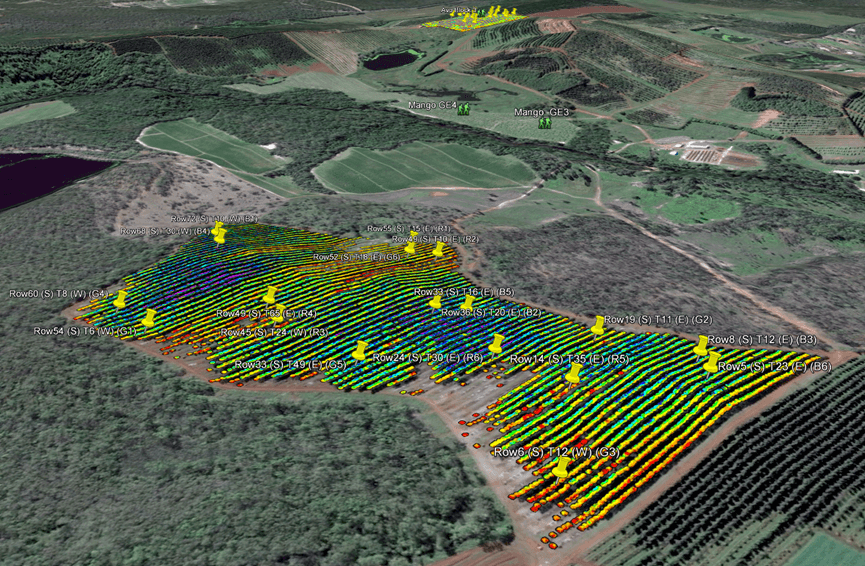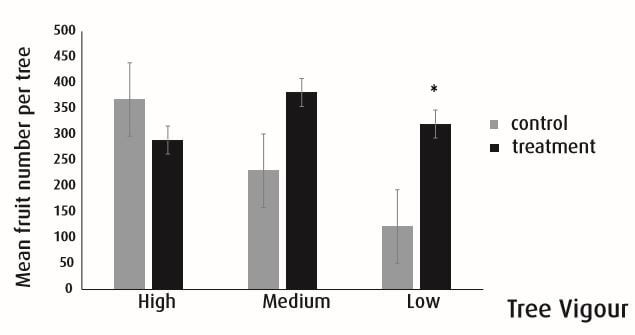Can we increase avocado production via pollination?
This article appears in the Winter 2017 edition of Talking Avocados (Volume 28 No 2).
Can we increase avocado production via pollination?
By Bryony Willcox, University of New England
In Australia, crops that benefit from insect pollinators have an estimated value of $4.3 million.
The pollinators that visit avocado flowers include managed honey bees, other wild bees, flies, wasps, beetles and butterflies. As pollination services delivered by insect pollinators are a key driver of yield and quality variability within these horticultural systems, increased knowledge about how we might go about reducing this variability through pollination is an important step forward.
The potential use of remote sensing to better understand this yield variability is being evaluated in a current national research project Multi-scale monitoring tools for managing Australian Tree Crops – Industry meets innovation (ST15016), funded by the Federal Government Rural Research and Development for Profit Scheme, and supported by Hort Innovation. One goal of this project is to map yield parameters and tree vigour across avocado orchards, and to better understand the extent to which these two aspects relate to pollination services.
The first interesting finding is that pollinator communities can differ from orchard to orchard within a region. For example, in the last flowering season (2016), honey bees were the most abundant flower visitor across seven Hass orchard blocks surrounding Bundaberg. Apart from honeybees, it was found that wild bees, beetles and flies also visit flowers and that individual avocado blocks differed in the identity of the most abundant pollinator group present (Figure 1).

Figure 1. Abundance of insect pollinator groups observed at two different orchard blocks in the Bundaberg region, 2016
We then looked at how tree vigour (combination of tree size and health), interacts with pollination services provided by insects. In this project, tree vigour is determined by an NDVI (normalised difference vegetation index) image derived from Worldview-3 satellite images (Figure 2).

Figure 2. An example of a satellite-derived NDVI image being used to determine high, medium and low vigour canopy growth across an orchard block. The yellow pins indicate the location of individual trees. These either received hand pollination treatment or were left as open controls, across varying tree vigour regions. The image has been overlayed onto Google Earth.
Looking at these interactions a hand pollination trial, replicated across five Hass orchard blocks in the Bundaberg area, began last year. The trial involves hand pollinating trees that represent a range of tree vigour classes with outcross pollen (Shepard variety) in addition to the open pollination services they already receive. A second group of trees across the vigour range did not receive the additional hand pollination, representing open pollination, and were retained as controls. At harvest, fruit number and weight of fruit were measured for each of the experimental trees.The second interesting finding is that trees with a low and medium vigour rating can produce increased yields (both fruit number per tree and
The second interesting finding is that trees with a low and medium vigour rating can produce increased yields (both fruit number per tree and total weight of fruit per tree) after receiving additional hand pollination (Figures 3 and 4).

Figure 3. Mean fruit number per tree across five Hass experimental blocks in Bundaberg, Queensland. Bars represent standard error of means. *represents significant difference between means of treatment and control groups

Figure 4. Mean total fruit weight per tree across five Hass experimental blocks in Bundaberg, Queensland. Bars represent standard error of means.
This suggests the medium to low vigour trees might be pollen limited. Interestingly, high vigour trees suffered reduced yields following hand pollination. We will also be comparing fruit quality measures between hand-pollinated and open control trees to better understand these results.
These experiments will be repeated in the upcoming 2018 harvest year to determine if the same trend is repeated, or potentially to identify if the smaller trees suffer a yield decline as a result of the higher yields they achieved during the 2017 harvest season. The findings may allow growers to quickly evaluate their orchards to make predictions of pollinator distribution and yields in their specific orchards.
Acknowledgement
Bryony Willcox is a PhD student at the University of New England, Armidale, collaborating with Associate Professor Andrew Robson, Dr Romina Rader and Dr Brad Howlett. The PhD project is being conducted as part of the Federal Government Rural Research and Development for Profit Scheme, supported by Hort Innovation. We would like to thank the growers in Bundaberg who allowed us access to their orchards including Simpson Farms, Chad Simpson, Tom Redfern (Donovan Family Investments) and AustChilli Farms.
More information
More on the Multi-scale monitoring tools for managing Australian tree crops — industry meets innovation project can be found at: www.une.edu.au/research/une-research-priorities/ agricultural-sciences/parg/research-areas-and-current-projects/ national-tree-project.
Date Published: 28/07/2017